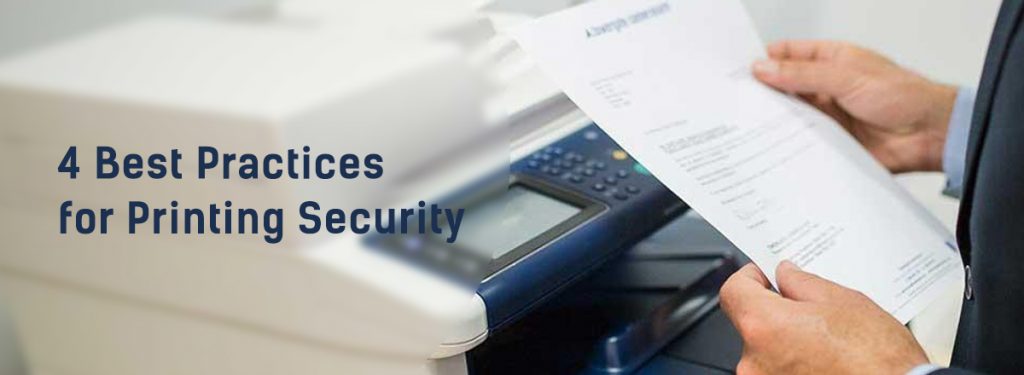Best Practices For Printing Security – Printers are an important commodity that every organization needs. These devices are lying there in the printing room make you think there are no risks associated with them. But that is not the case. Think of the documents that your workforce takes the print out for. Is all of this data risk-free if it reaches the hands of an unauthorized person?

You need to ensure that the flow of information, no matter how casual and apparently inconsequential, is safe and remains private. For ensuring this in your organization, you need to be on the lookout for best practices. Regarding printing security and follow them.
This article aims to help you identify the best practices which will ensure the safety of your printing devices and content in the workplace.
Best practices to ensure printer security
With the increasing pace of innovation and discoveries in the digital world, the risks and vulnerabilities are also increasing. Data breaches are a common occurrence, and many times, these breaches go unnoticed because the hackers have become smarter.
Thus paying attention to the security of printing data and printing devices is essential to keep your business afloat. You need to incorporate the following practices in your workplace:
1. Manage access
The printing devices are remotely connected to the internet so that students or employees in organizations can access the devices and save time. But the devices must not be available for connectivity to the public internet. Neither should your organization’s devices be set up with default passwords. To avoid risks, you can change the default passwords to the admin control panel page and control the access of users.
If your organization doesn’t pay attention to the configuration, the hackers can access the device and alter the network address. You may be providing the hackers with enough leverage to perform Denial of service attacks and attack other devices on the same network as well.
2. Avoid running unnecessary services
Printing devices often come with a default setting that allows running of insecure services. These services include FTP, HTTP and Telnet protocols. When you do not later these default settings, and let these services run, you are giving the intruders and hackers a permission to access the data printed with the device automatically.
When you disable these services, you prohibit any malicious attempts by hackers, which may otherwise want to access your important data and cause a breach of a significant impact on your workplace.
3. Keep up with the updates and patches
Like computer operating systems, nowadays printers have soft wares that require updates. It is especially true of the multi-function devices available nowadays. Keep your IT tea alert to keep a check on the firmware updates and patches available for the printing devices frequently.
Each update comes with a better security mechanism and toolkit. Similarly, patches are the loopholes that require an update or repair so as to avoid your device from security risk.
4. Get good quality printers
If you are using ordinary small printers, they might not offer strict protocols and may not support the security mechanism that your workplace data requires to be safeguarded with. Thus indulge in devices that are highly capable of keeping your operational data safe.
You can order your Multi-function devices with advance soft wares from a good supplier of Xerox Abu Dhabi to manage access and security of data. A good quality printer will have a hard drive that you can preserve ad keep safe from security risks.
5. Monitor print usage
Avoid unnecessary printouts. In every organization, there are black sheep. Make sure no one gets access to print devices for harassment purposes. Keeping a strict check on the users, so that no one consumes the printing equipment and material for personal gains or worse, against the organization’s benefit.
Printing security is as important as it gets!
Many businesses all over the world have embraced digital technology and have thus changed the nature of the work that occurs every day in their workplaces. While digital technology has been making lives easier in the workplace, there’s a lot that needs your attention.
It is important that you, as a business owner, ensure that the relevant experts regularly update the firmware of the printing devices. You also need to make sure that the data and its flow are the least vulnerable to breaches. For this, the IT professionals will need to keep an eye on the multiplicity of devices connected to the internet.
You need to ensure that the FTP and HTTP services are disabled and the passwords are not set at default. Data breaches can prove detrimental to your business. Sometimes hackers are just trying out new skills they learn over the internet, while at other times, they may be intending to cause your organization serious damage.
Thus, be very careful with the printing data and device security!
